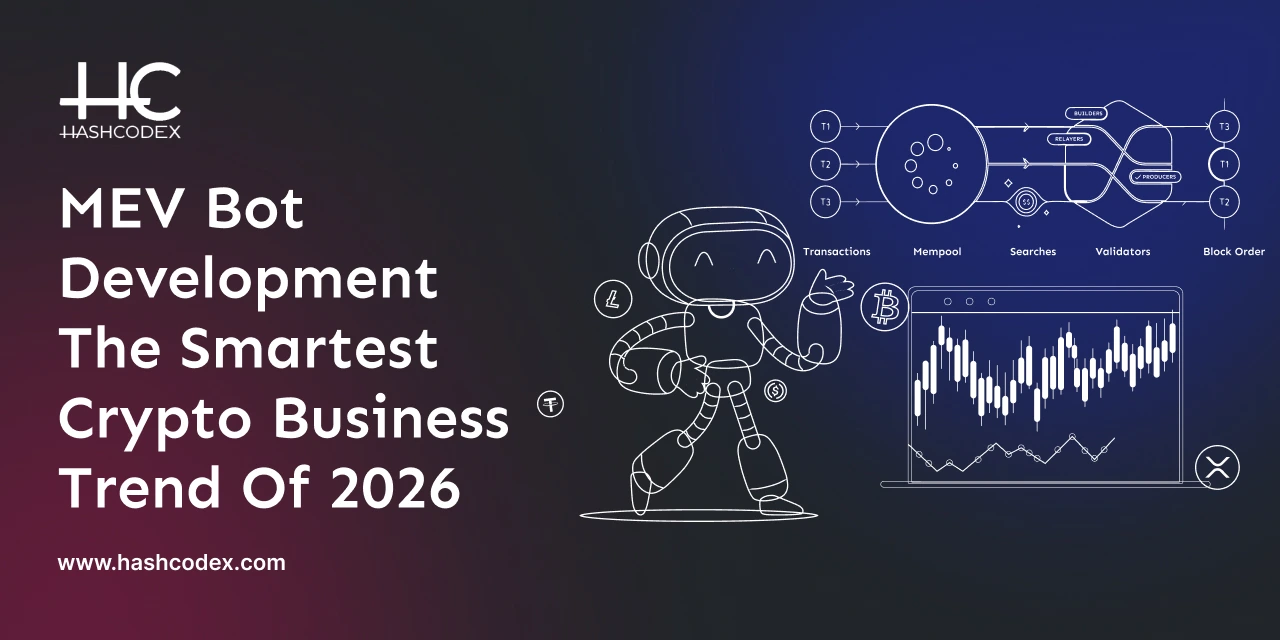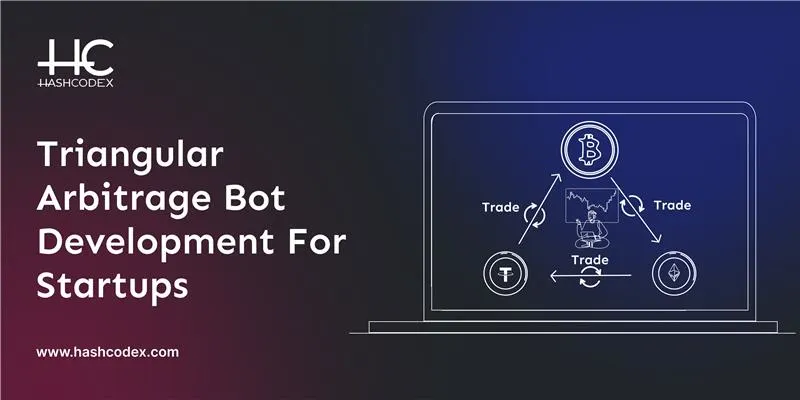What if you could offer your traders a robot that never sleeps and trades smarter than any human?
Sounds like science fiction, right?
That's exactly what an AI quantitative trading bot will do.
It's like transforming users' trading strategies into a superpower. This bot searches a treasure mine of market data, identifies opportunities before anyone else, and makes quick decisions while you sit back and watch your smart system work.
But how do you build one?
Don’t worry, this blog will help you. We'll walk you through the process of building your own AI trading bot, from development to live deployment.
Get ready to add AI power to your trading platform!
What is an AI Quantitative Trading Bot?
An AI Quantitative Trading Bot is a smart software program that uses artificial intelligence (AI) and data-driven algorithms to analyze market trends and execute trades automatically. It analyzes huge amounts of market data, finds trends, and executes buy or sell orders based on predetermined methods.
These bots are designed to maximize revenue by making quick, data-centric decisions without human intervention. They apply algorithms to detect trends, manage risks, and optimize trades in real time to help traders make better use of on-market opportunities.
Why Developing an AI Quantitative Trading Bot Matters in 2026?
By 2026, trading will be faster than ever. Markets are flooded with data, trends change in seconds, and manual procedures can lead to costly mistakes. That's why an AI quantitative trading bot is important for those who are serious about smart trading.
These bots don't simply follow old techniques; they:
- Analyze millions of data points fast to identify profitable opportunities.
- Respond to market shifts in real time and learn from growing trends.
- In addition to price charts, consider different data sources such as news, tweets, and market sentiment.
Top reasons why AI trading is taking off:
- Retail algorithmic trading is growing - Platforms like Alpaca and QuantConnect make it simple to get started.
- Hedge funds are going full quantitative - Algorithms currently drive more than 60% of US stock trading.
- AI outperforms static strategies - Bots change with the market, whereas fixed scripts might quickly become outdated.
Simply said, creating an AI quantitative trading bot in 2026 is the best strategy to increase revenue and speed up growth.
Step-by-Step Guide to Build an AI Quantitative Trading Bot for Smart Trading
Now, just imagine it: a smart bot that trades more quickly and wisely than a human. But how can that concept be developed into an actual AI quantitative trading bot? This step-by-step, beginner-friendly guide will help you create your own automated trading device.
Step 1: Set Your Trading Goals and Plan
Start with a clear plan. Decide what type of trade you want.
- Short-term trend
- Long-term trend follows.
- Market-neutral strategies.
Choose the right:
- Market: stocks, cryptocurrencies, or forex
- Time period: within a day, daily, or weekly.
- Risk profile: high-frequency or swing trading.
Pro tip: Keep things basic at the beginning. Accuracy and consistency are more important than complexity.
Step 2: Gather and Prepare Market Data
Your bot's ability depends on the data it uses.
- Historical data for testing: pricing, volume, and indications
- Real-time data for live trading: using APIs like Binance, Alpaca, or Polygon.io.
- Alternative data: news, social media trends, and economic indicators.
Pro tip: Before inserting the data into your models, clean it up, fix any mistakes or outliers, and normalize it.
Step 3: Design Features and Train AI Models
This is where the magic occurs. Your bot learns from the data and makes predictions.
- Use technical indications as input features.
- Train supervised models such as Random Forest, XGBoost, and LSTM.
- Use time-series simulations for trend prediction.
- Validate models with proper testing to avoid mistakes.
Pro tip: If your bot will have a user interface, make it easy to use from the start.
Step 4: Backtest Your Strategy
Before going live, test your plan with historical data.
- Examine trading costs, slippage, and market effect.
- Use tools such as Backtrader and QuantConnect.
- Analyze the strategy's drawbacks and improve it.
Pro tip: Backtesting can help you avoid serious mistakes; think of it like a crash test.
Step 5: Build and incorporate the Execution Engine
Your bot is now able to trade. Build an engine that
- Uses an API to safely connect to brokers or exchanges.
- Places, cancels, and adjusts orders.
- Monitors available vacancies and account balances.
- Includes safety controls like stop-loss and maximum drawdown.
Pro tip: Begin in paper trading mode to test everything securely.
Step 6: Add Risk Management & Monitoring
Even the most advanced bot may fail if enough safety measures are not included.
- Implement stop-loss and take-profit rules.
- Set exposure limits for each asset and portfolio.
- Add kill switches for emergencies and keep an eye on activity in real time.
Pro tip: If you don't track your bot, you are simply hoping for the best.
Step 7: Deploy, Retrain, and Improve
Your bot is now live, but the work is not yet complete.
- Retrain AI models on a regular basis with fresh data.
- Review performance logs weekly.
- Update strategies as market circumstances change.
Pro tip: Consider your bot to be a plant that needs frequent maintenance to be healthy and profitable.
Core Features of AI Quantitative Trading Bot Development
Building an AI quantitative trading bot is not just coding a few rules and letting it run; it's also about providing your bot with the tools it needs to think, act, and adapt like a professional trader. Without these key features, your bot is only a technical calculator dressed in a suit.
Data Integration
When making decisions, your bot should always have access to the most recent data available by collecting both historical and real-time data from several sources, such as exchanges, CSV files, and APIs.
Strategy Engine
This is the brain of your bot. Whether it is simple rules or advanced AI-driven models, it turns raw data into actionable trades by executing trading logic.
Backtesting Module
Your bot should evaluate its strategy against past data, including fees, slippage, and delays, to see how it would have done before risking real money.
Execution Engine
Once a choice is made, the execution engine sends buy or sell orders in real time, securely, and without delay, converting plans into actual trades.
Execution Engine
After a decision is made, the execution engine converts plans into actual trades by sending buy or sell orders instantly, securely, and in real time.
Risk Management
Without limitations, even the most effective bot might lose money. Risk management ensures that financial allocation rules, exposure constraints, and stop-losses protect your users' assets.
Performance Monitoring
Use key performance indicators like win rates, drawdowns, and Sharpe ratios to monitor your bot's performance and identify areas for improvement.
Logging and Alerts
For transparency, auditing, and learning from previous trades, your bot should record all activities and alert you to important events.
User Dashboard
A basic dashboard (optional but useful) allows users to evaluate performance, change strategy, and even stop trades immediately when needed.
Best Tech Stack to Develop Your AI-Powered Trading Bot
No one builds a trading bot by guessing or using spreadsheets, and you shouldn’t either. Your tech stack is what makes your bot work. With the proper tools, it can operate easily and succeed in this industry because of its speed, reliability, and adaptability.
When creating a trading bot driven by AI, here's what we advise you to follow:
Programming Languages
- Python - Its simple syntax and detailed libraries make the development quick and easy.
- C++ - It is great for high-speed execution, when every millisecond matters.
- JavaScript/Node.js - Good for basic web integrations, dashboard development, and notification sending.
AI & Data Science Libraries
- NumPy and Pandas - Analyze and manage large datasets with ease.
- Scikit-Learn - Quickly develop supervised models for trading predictions.
- LightGBM or XGBoost - High-performance models for structured data.
- TensorFlow/PyTorch - For deep learning techniques like reinforcement learning and LSTM.
- FinRL - An open-source library for AI reinforcement learning in trading.
Backtesting & Strategy Frameworks
- Backtrader - Testing approaches are flexible and Python-friendly.
- Zip Line - Suitable for portfolio-level backtesting.
- QuantConnect (LEAN) - Professional-grade cloud framework for smooth backtesting and live deployment.
Broker & Exchange APIs
- Alpaca - Stocks and crypto are traded commission-free and on paper.
- Interactive Brokers - Multi-asset, global access with plenty of liquidity.
- Binance / Coinbase - Cryptocurrency with high volume and real-time data streams.
Deployment & Monitoring Tools
- AWS, Azure, and Google Cloud Platform - Cloud hosting and scalable computer resources.
- Docker - Make sure consistent installation across all environments.
- Airflow - Automate model training and data pipelines.
- Prometheus + Grafana - Dashboards and notifications provide real-time monitoring of performance.
How to Ensure Security and Compliance in AI Trading Bot Development?
It's exciting to build an AI quantitative trading bot, but it's like leaving your money unsecured if security and compliance aren't in control. Cool technology doesn't matter if it's not legal and safe. Let's divide it into two main categories:
- Security Requirements
- Compliance Factors
Security Requirements
Protection of API Keys
Simply, the trade vault's keys are the user's API keys. Rotate them frequently, store them securely, and encrypt them. They should never be encoded into your bot.
Two-Factor Authentication (2FA)
Use 2FA to protect all of your related accounts, dashboards, and developer consoles. This one step prevents a lot of unauthorized access.
Encrypted Data Streams
Always use HTTPS and SSL to ensure your bot connects securely with brokers, exchanges, and cloud servers. This protects data from hackers.
Access Control
if you're developing at scale or as a team, don't give complete access to everyone. Limit admin authority and use role-based permissions.
Fail-safes & Error Logging
Logs are useful for more than just bug fixes; they can help you track activities for audits. Also, always have kill switches to stop the bot in the case of strange activity or major losses.
Compliance Factors
Understand Your Regulator
Regulations differ by market and location.
- US -> CFTC, SEC, and FINRA
- UK → FCA
- EU → MiFID II, ESMA
- Crypto regulations vary by location, so be cautious.
Maintaining Documents
Keep complete records of all trades, order flows, and decisions. You will be prepared in case regulators knock.
Filters for Market Manipulation
Verify that your bot isn't accidentally participating in illegal activities like pump-and-dumps or spoofing. Regulators take immediate action against this.
Privacy of Data (GDPR & Beyond)
If you are storing any user data, observe international privacy regulations. Building trust is the goal of compliance, not only avoiding penalties.
Cost of Developing an AI Quantitative Trading Bot
Typically, the cost ranges from $15,000 to over $80,000, depending on the level of complexity you want your bot to have. Many factors influence the cost, including the number of features (modules), the complexity of the trading logic, the kind of data you want to apply, AI skills, and regulations to meet.
Let’s break it simple:
- A basic MVP bot with essential trading features might cost around $15,000 to $25,000.
- The cost range for a more complex bot with AI models, real-time data, and risk management is often between $40,000 and $60,000.
- For a complete large-scale solution with scalable AI, compliance, and multi-asset support could range from $80,000 to $150,000+.
Keep in mind: the cost increases with the amount of features, data, and AI power added. If you're just getting started, it is best to build an MVP to be budget-friendly.
Conclusion
Building an AI quantitative trading platform is not just for big traders or tech experts; with the right guidance, anyone can start. You can develop a bot that trades wisely, learns from data, and saves you from making emotional decisions by following the steps in this blog.
The secret is simple:
- Start small
- Test frequently
- Continue to adapt as the market changes
The best part is, you don’t need to do it alone. Hashcodex is for you. We're a reputable crypto trading bot development company helping entrepreneurs all around the world in creating strong and reliable bots. Our expert team works hard on every project, keeps things simple, and delivers on schedule.
Looking for the right partner? With Hashcodex, you’re in safe hands. Contact us today!











